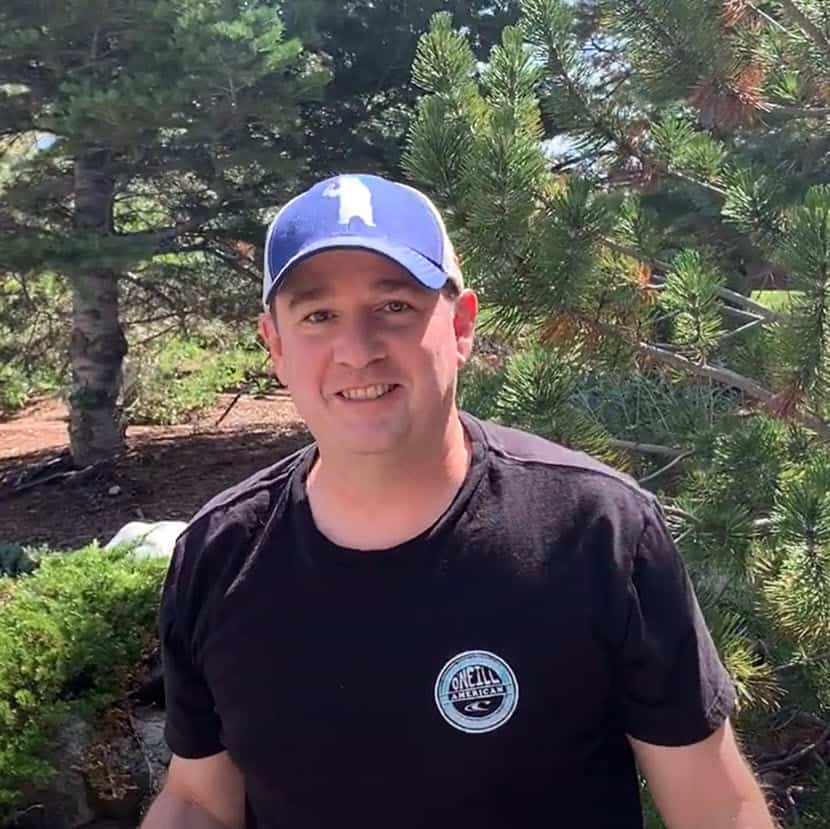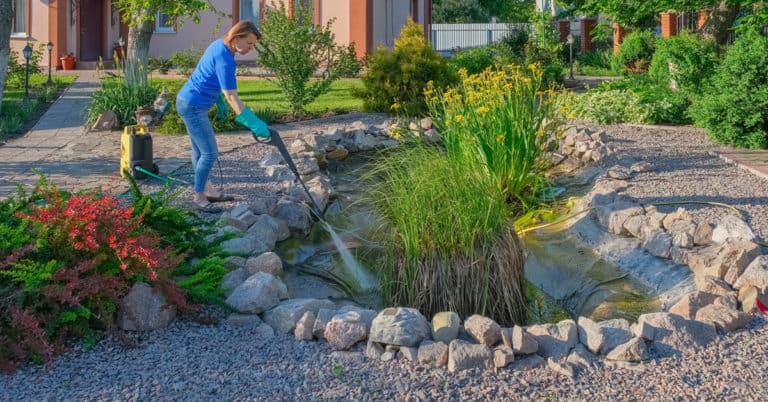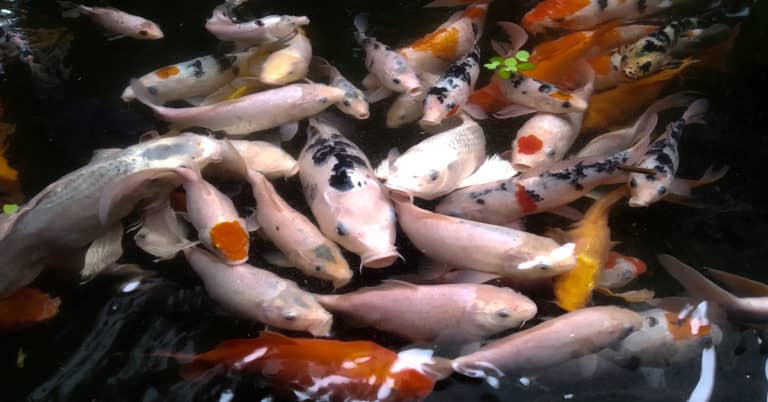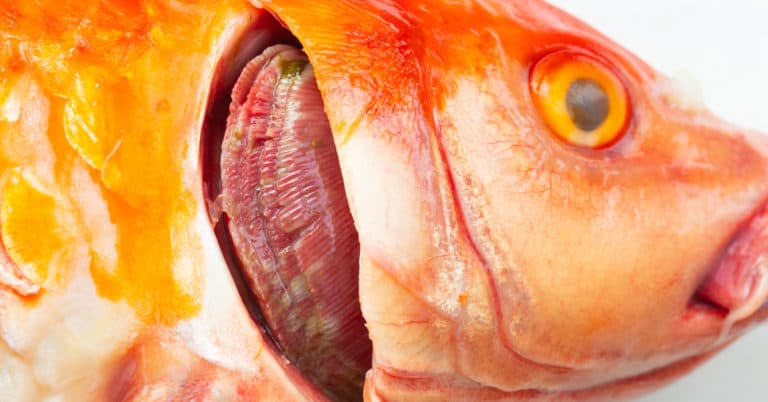Algae is an aquatic plant whose existence goes back 2 billion years. There are close to 30,000 different species and varieties. Not to mention, they can live year-round through all types of weather. Say hello to your lifelong koi pond invader!
Algae is the result of an imbalance such as low oxygen or too much fish waste. You will most likely deal with algae at some level, no matter your efforts to avoid it. One of the main reasons for algae invasions is overstocking fish and improper filtration.
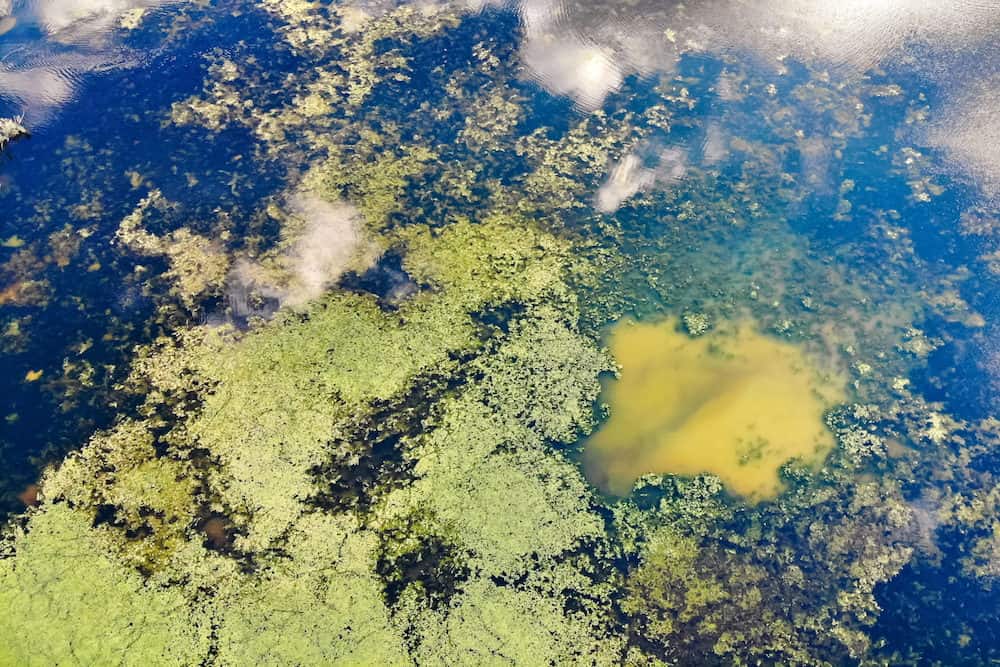
As the owner of KoiPondHQ, I consider myself a pond hobbyist who unfortunately has had lots of experience with algae. I’ve discovered that it’s both good and bad for the health of your koi pond. For example, everyone hates the good old Spring Bloom.
The Spring Bloom is a frenemy that works as a filter to balance out nitrogen. The only issue is that it’s not the easiest to look at.
The best solution to keeping your algae at bay is a koi pond algae eater. They do most of the work by feasting on your algae so you can focus on other things.
My goal is to share what I’ve learned over the years of experience and research on managing algae in your koi pond. When you finish reading this article, you will have a new understanding of how to make managing algae in your koi pond easy. And if you need help check out our directory to find someone local who can provide you with koi pond maintenance services and clear out the algae for you.
I will cover the following topics related to koi pond algae eaters:
Ok, so let’s admit it. The main reason we all hate algae is because of how it looks. It decreases our ability to see our aquatic life. One thing that feeds your algae is nitrogen and phosphorus.
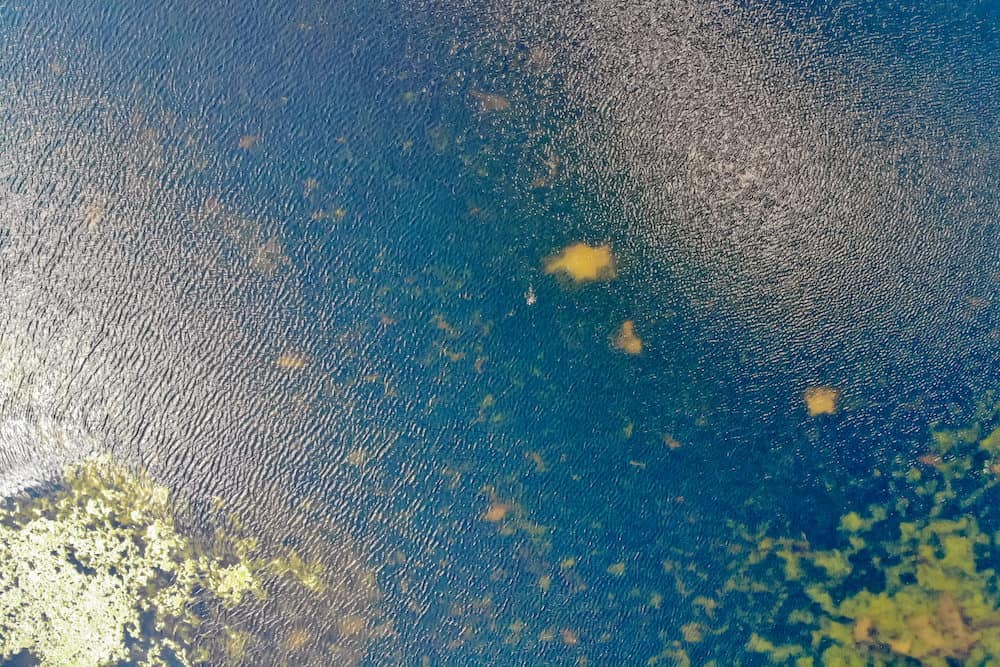
The more waste you have nearby, and in your pond, the more nitrogen and phosphorus will wreak havoc on your pond, decreasing the water quality. I learned this the hard way by having too many fish in my pond. They were producing so much waste that I achieved some very impressive string algae.
String algae look like beautiful glossy green hair. Aside from that, it is something you don’t want in your koi pond. I had an overgrowth of string algae. It was only after I noticed my fish were slowing down did I realize I shouldn’t have let it go for so long.
String algae suck the oxygen out of the pond water. It suffocates your fish. I was lucky enough not to lose any fish because of it.
Algae is easily nourished in the late spring and summer months and with sunlight. Photosynthesis is the lifeblood of that disrupting plant. However, you can suffocate algae with an excellent filtration system.
Upgrading your filtration system can help but it may not completely solve algae issues and keep your fish healthy.
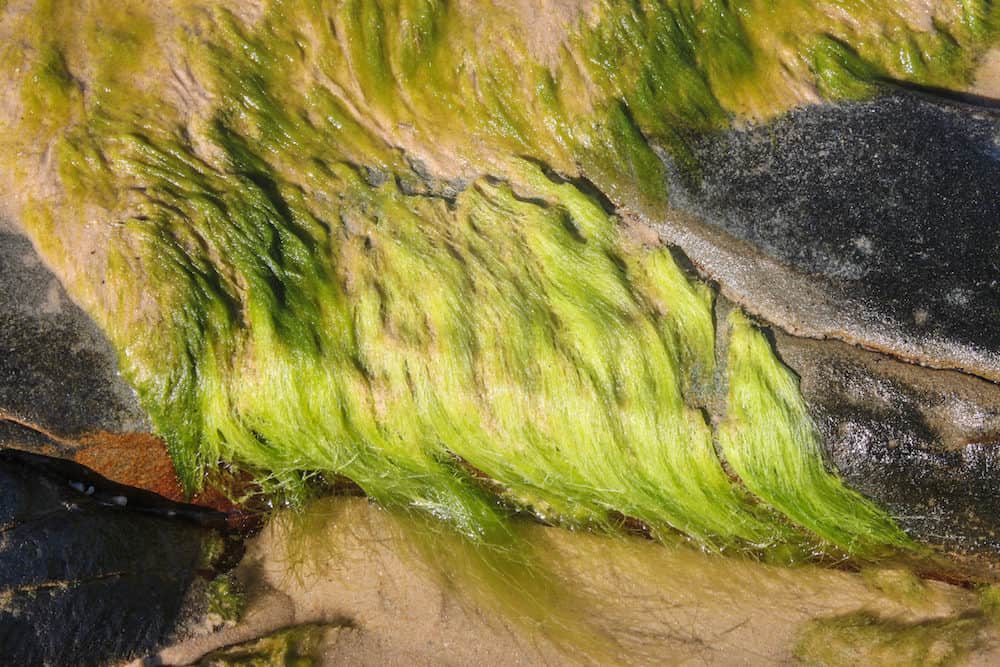
According to the experts, you shouldn’t have more than 30 percent of algae coverage in your fish pond. Any more than that, and you run the risk of deteriorating your fish life. The smaller fish live longer because they can hide inside of the thick algae safely from gamefish.
It will negatively impact the lifecycle of your pond because fish will reproduce and not reach full growth.
It is usual for your koi pond to have aquatic plants such as algae. The goal is to manage it to ensure it doesn’t get out of hand. Since algae thrive off of nitrates and phosphorus, it helps balance out the water a bit.
Regular pond maintenance, a sound filtration system, and the friendliest algae eaters will help you manage it effectively.
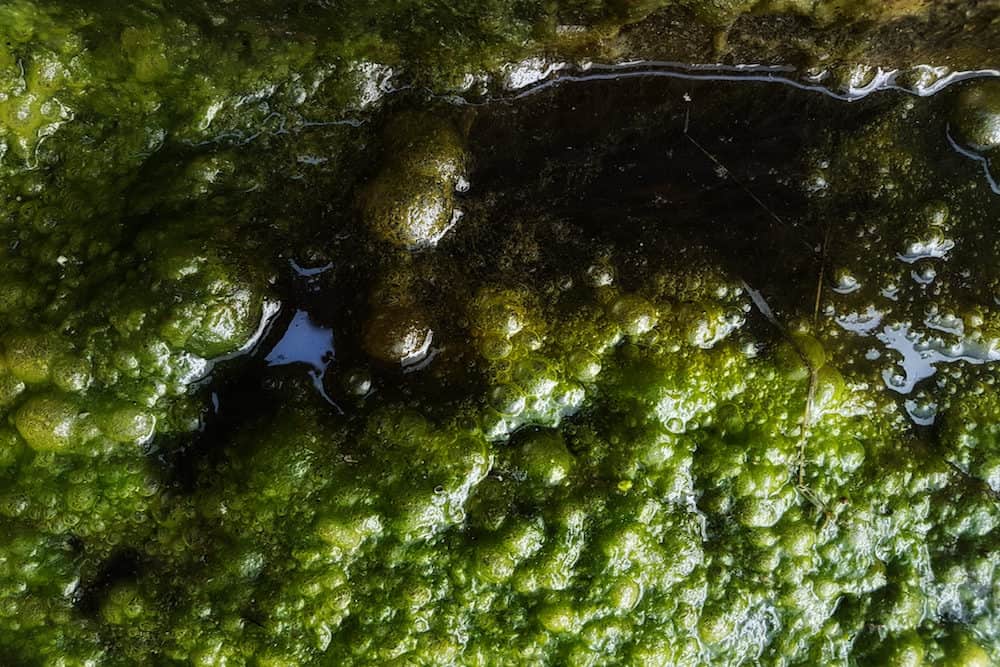
I get asked this question a lot, and the answer is yes. Koi fish eat algae, but they only eat it when there isn’t anything else to eat. Therefore, if you feed your koi fish, they won’t eat the algae. Not to mention, old food that isn’t consumed starts to rot.
This causes even more problems as if we didn’t already have enough!
Also, another fun fact is that koi don’t eat when it’s cooler than 50 degrees. All systems are not a go in the winter, and feeding will only cause illness and possible death.
Now, koi fish do not have to be fed. Believe it or not, many koi pond owners don’t feed their fish and have thriving ecosystems. Koi can essentially live off of the algae in the pond - along with other insects that find their way into the water.
However, to have enough algae to sustain them and the other fish, you must avoid overstocking. Overstocking your fish is your surefire way to make your fish’s lives hard and give yourself trouble managing the high amounts of algae that will form.
The major key here is to keep a healthy balance of fish and algae, and your koi pond will thrive.
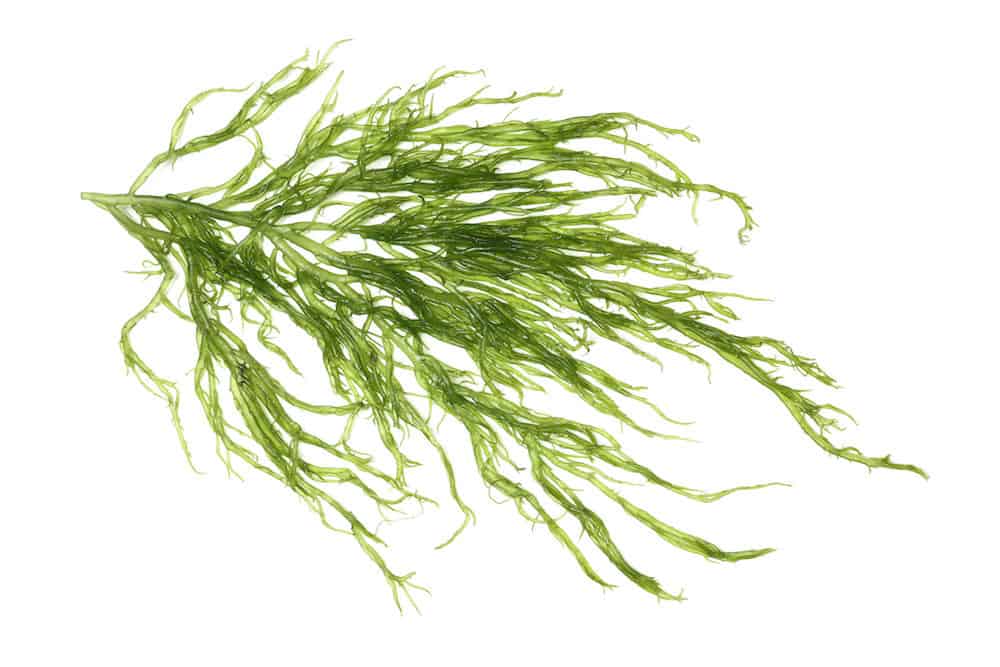
Based on my experience, the best way to have a thriving koi pond is to create an ecosystem of fish that live happily together. All of these fish should eat algae so that you can enjoy your koi pond with less maintenance.
You will also save money on fish food by creating a koi pond homestead. You don’t have to buy food. All you need to do is have a fantastic filtration system, and you have a self-sustaining koi pond.
Adding tropical fish to your koi pond is a great way to create a beautiful ecosystem as well as increase the chances of total coverage of algae consumption.
The Siamese algae eater is a great addition to your koi pond. They can live safely and peacefully with koi fish. Siamese algae eaters promote peace, not fighting.
The best thing about these beautiful silverfish is that they are the best algae eaters because they can adapt to any sized aquarium.
The Siamese algae eater grows up to six inches in length. They have narrow grey bodies with a black stripe spanning from the head to their tail. Females are usually about 30 percent larger than males.
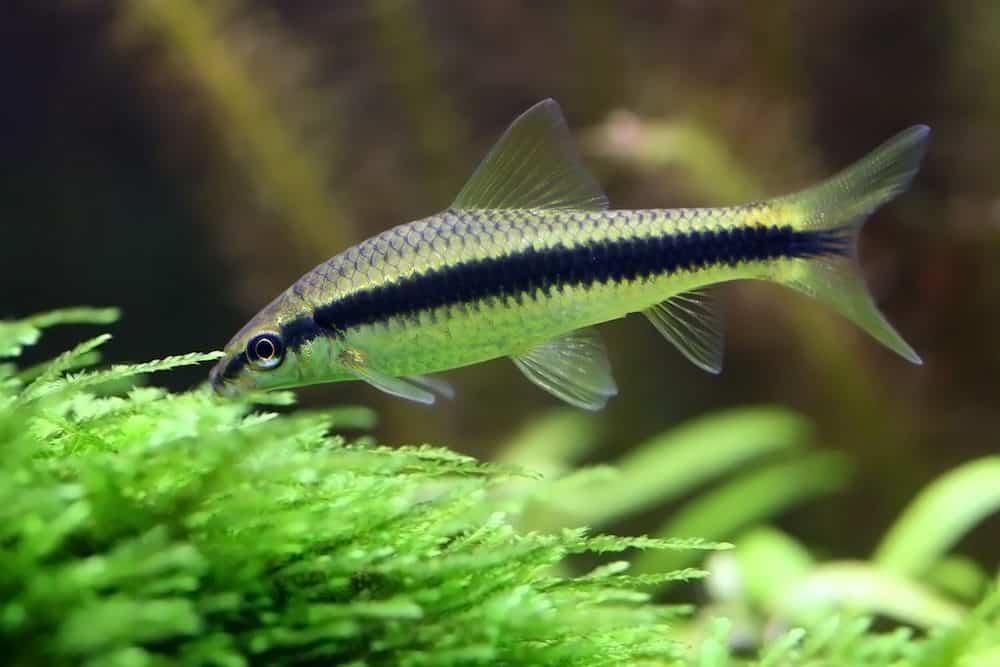
If you need to manage higher levels of algae, the Siamese algae eater will get you there. I love that they don’t isolate themselves in one specific area. They tend to travel and feast on algae all over the pond but prefer lower-hanging algae. Be aware that they are very fast-moving fish.
While very peaceful, their fast movement can spook other fish in the pond. They usually cost about five dollars per fish. So, buying a few and then seeing how well they slow down algae overgrowth is ideal. Remember, we don’t want to overpopulate the pond.
Not to mention, these fish do produce a lot of waste. An abundance of waste is a big part of the problem we want to avoid.
They tend to travel and feed together, which means they cover more ground in less time.
The Otocinclus catfish or Oto is another great choice for algae management in your koi pond. They are peaceful and tend to eat the surface algae. Oto’s are small fish and grow up to two inches in length.
They work in tandem with the Siamese algae eater, which tends to eat more of the lower and ground algae, and they are just as fast.
The Otocinclus catfish are known as the dwarf-sucking catfish because they attach to surfaces using their round mouths to suck away algae. One thing to note about these fish is that they are pack animals as well. It is best to buy at least six together for them to thrive.
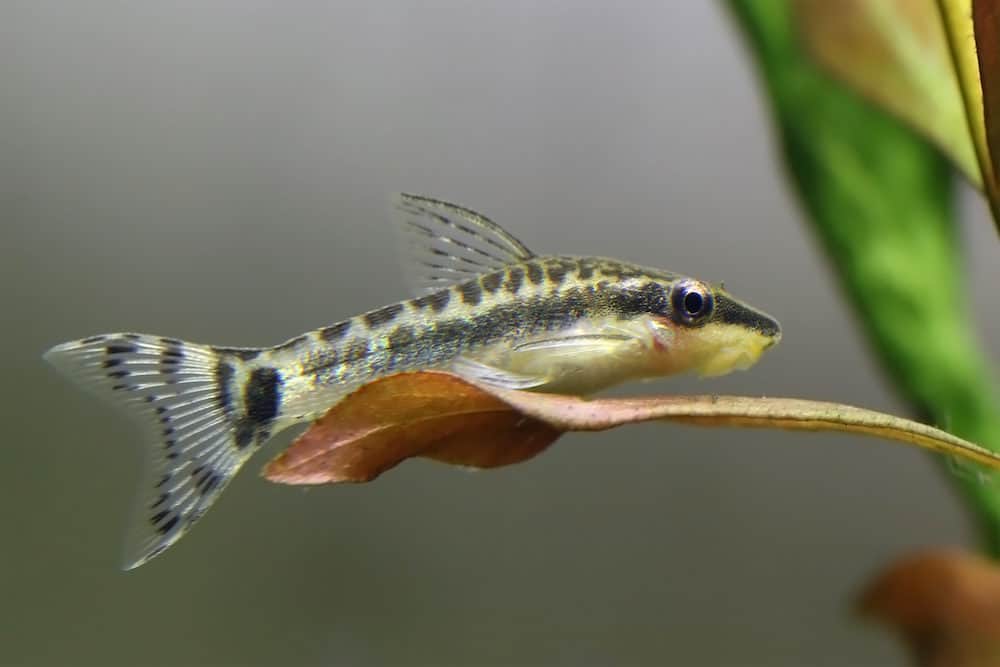
What I love the most about these algae eaters is that they are constantly eating. They tend to love the soft green algae that settle on the plants in the pond. My recommendation with the Otocinclus catfish is to start with only six.
If you put more than about six in your koi pond, you run the risk of having to buy food for them. This is because they don’t eat green spot algae. It tends to be tougher to remove. Because they are constantly eating, there won’t be enough soft green algae to go around.
An interesting fact about Oto’s is that they eat boiled vegetables. For example, you can boil romaine lettuce and spinach for 5 minutes and place them in your koi pond for your catfish to eat. It’s essential to set up your vegetables so that they are in one spot.
It will make it easier for your Oto’s to reach them. Last, remember to remove uneaten vegetables after a couple of days to avoid an increase in bacteria. Cooked vegetables will rot much quicker.
Grass carp are another option for koi pond algae disposal. However, they are similar to koi fish in that they won’t eat algae unless it is their only choice of food. The Grass Carp has a long silver and white body and a smooth grey or white tummy.
They grow up to four and a half feet long, and some of them are close to 100 pounds. They eat three times their body weight each day.
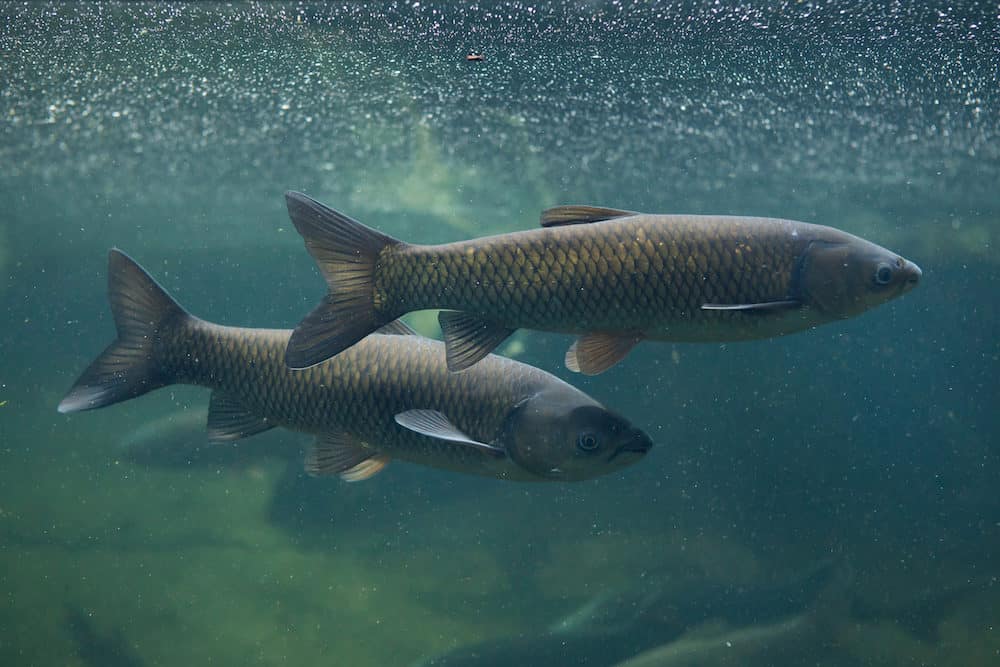
It is illegal to have them in 32 states because they reproduce excessively. So they're probably not a good fit for your koi pond.
Goldfish are another recommendation for koi pond algae control. However, there are some things to know about mixing koi and goldfish. Goldfish can grow up to 14 inches in size. Goldfish kept in smaller koi ponds tend to be about half that size.
They make such a beautiful addition to any koi pond. The biggest thing to watch out for is the fact that koi will mate with goldfish. It can create a problem of overstocking in your pond. Fry’s that are born are usually brown and grey. Some say they turn orange over time.
Goldfish also feed on the eggs and fry of koi fish. I wouldn’t bet that adding lots of goldfish would prevent overstocking though.

Now that we understand that, goldfish are heavy eaters. The main reason they make an excellent addition to your koi pond is that they never stop eating. Goldfish don’t have stomachs, and they also travel.
Goldfish eat algae from the bottom of the tank and off the plants and rocks inside the pond. I love the fact that goldfish eat string algae even during the winter months when it’s frozen.
The thing to remember about goldfish is that if you add them to help manage algae in your garden pond, remember that they are omnivores. If you disagree with them eating koi eggs and fry, they may not be the pond fish for you.
It’s also important to consider that they alone will not keep high algae levels under control. Mixing them in with Oto catfish and Siamese algae eaters to provide full coverage of algae consumption is ideal.
More important than the tropical fish you put in your koi pond is creating an atmosphere for them to thrive. Goldfish and koi can live year-round, even in cold temperatures, by hibernating.
This means that their metabolism slows down, and they move around a lot slower and less frequently to weather the winter effectively.
On the other hand, Siamese algae eaters only thrive in temperatures that are above 70 degrees Fahrenheit. Keep in mind that they live up to 10 years.
However, if you live in an atmosphere that isn’t warm year-round, they will need to be kept indoors until the spring and summer months.
Oto’s thrive in temperatures between 72 and 70 degrees Fahrenheit. They will need to be kept indoors as well.
However, there is one solution. The best way to avoid having to move your catfish and Siamese algae eaters indoors during the cooler months is to add a koi pond heater to your ecosystem.
It is the best way to keep all of your fish happy, healthy, and safe while managing your algae growth year around. In most cases, a heater for your koi pond will be under $100, but that depends on your preference and the size of your koi pond.
Also, ensure that the water in your backyard pond is constantly moving and that there are shallow areas that prevent the water from overheating. For example, the water can heat up to 90 degrees Fahrenheit in the summer months, which can be deadly for all of your fish.
